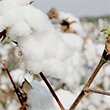Free People was established in 1970 by Richard Hayne. Headquartered in Philadelphia, PA, the brand designs and sells dresses, tops, and other women’s apparel. Their products are manufactured in US and India.
In our pursuit of knowing how sustainable Free People is, we researched their current practices and how much they are impacting the environment. Areas we explored include raw material use, brand communications, long-term use, energy efficiency, and waste generation.
The larger part of their collection is made of cotton, which is known to have very high water and energy requirements. Additionally, the brand also uses viscose, polyester, nylon, and organic cotton in manufacturing their clothes. This heavy use of polluting fabrics show that they have lower-than-the-average standards when it comes to sourcing of raw materials.
Free People values sustainability by actively communicating their green efforts and goals while informing their customers about the most pressing environmental issues. They have marketing campaigns that inspire the public to take steps in improving their global impact. Moreover, they enhance transparency by sharing details of the environmental life-cycle assessment results of their products.
Efforts to help promote the long-term use of their products were not included in their retail strategy. Additionally, they also don’t coordinate garment collecting initiatives, which could help encourage their customers to improve their efforts in reducing their personal waste footprint.
One of the most impressive measures that they are employing in their operations is their use of renewable energy and energy-efficient technologies. What’s more, the brand also hopes to extend this shift as far as the consumer use stage by providing their customers with eco-conscious care instructions.
Our environment pays a hefty bill for every package that we transport quickly. When distributing their products, the brand provides their customers with the choice to go for a standard shipping optionÑa slower and less harmful way to move goods. In addition, they also offer their customers with incentives for opting out of express shipping methods like same-day or overnight delivery.
Free People hasn’t yet developed a packaging solution that don’t involve any plastic material. Furthermore, they also use the wrong size box or include unnecessary layers of packaging to pack their orders in. This practice is harmful and increases their overall impact during the post-consumer use phase.
After researching how sustainable Free People is, we determined that, based on their computed score of 3.4 or a rating of Late Bloomer, they are hardly sustainable. This is a very low rating and indicates that they are performing poorly with repect to their environmental efforts.








































